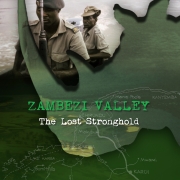
Rhodesia (later Zimbabwe) probably had the African continent’s flagship Game Department for almost half a century. Zimbabwean national parks like Hwange, Gonarezhou and Matusadona remain prime, untamed African wilderness even today. In my opinion, they were always better managed than their counterparts like the Selous in Tanzania and Mozambique’s Gorangosa.
Rhodesian National Parks attracted, or shaped, the best and the brightest. Men like Ted Davison, Ron Thomson, Rupert Fothergill, Clem Coetsee, Ollie Coltman, Rowan Martin, Glenn Tatham, Willie Nduku and Norman Monks who were and are legends in African conservation. Mike Bromwich was one of them. One of this book’s strong points is that it is written from a number of different perspectives by the people who were on the ground, and had seen and done it first-hand. This book is clearly a labour of love.
Many times, over the past two decades, I have wondered why or how some aspect of Zimbabwe’s National Parks history or modus operandi came about. Why was the waterbuck’s head chosen as their symbol? Who did this or that? This has usually entailed a trip to the national archives or an email to someone like Ron Thomson for enlightenment. The only reason I have received answers is because men like Thomson are still around. Sadly, men like Tim Braybrooke have passed on, but, a couple of years back, I was fortunate to get the story of the great elephant Dhlulamithi from him in his own words. Once these men die, many tales will be lost forever. This is a book that badly needed to be written. I was relieved when I heard the first rumours of its publication.
The book is about a sort of renaissance period wherein Africa’s colonial ‘game departments’ were evolving into true custodians of their countries’ natural heritage, rather than merely being some form of liaison division between wilderness and farmers. Also, the cut-off date for the period covered, 1990, marks a time of great turmoil within the department, and indeed within the Zimbabwe government. There are still many stories that need to be told about those days. I have had the pleasure to know and work with men like Ollie Coltman, Howard Shackleton and Glenn Tatham, and to shoot and socialise with the likes of Chris Pakenham and Ken Worsley over the past thirty years, so it was a real pleasure for me to review this work. This book is unique in that it is more than a story of the African wilderness and wildlife, it is a story of people: the people who pioneered the concept of sustainable management and use of game.
In his foreword, Dr Colin Saunders, who headed the National Parks and Wildlife board from 1975 to 1987, and who knew most of the key players, emphasizes the hopes, dreams and aspirations of the myriad people who made the whole system work. As he says, “They led very full and interesting lives.” (Saunders’s own book Gonarezhou – A Place for Elephants is well worth reading.)
I am privileged to have known many of the folk whose lives come to light in this tome, and that’s pretty spot-on. They constitute a treasure trove of anecdotal wisdom, which Mike Bromwich has done an admirable job of collecting and collating into a high-quality quasi-hardback anthology. The writing is varied and never boring; many of the stories seem almost beyond belief. But they are true. High resolution colour and black and white photographs augment this unique 640-page endeavour. It is long overdue, but no doubt well worth the wait when you see how it has been done.
The first edition of National Parks and Wildlife Management, Rhodesia and Zimbabwe, 1928-1990 has sold out, but Mike is working now on a revised second edition, which should be out mid-2020 – contact Mike directly to order a copy on mikebromwich1@gmail.com. If there is one title that has been published in this past decade that constitutes a ‘must-have’ for any Africana or wildlife library, it is this one.





Leave a Reply
Want to join the discussion?Feel free to contribute!